Brikkho Foundation: Setting up Orphanage for Trees
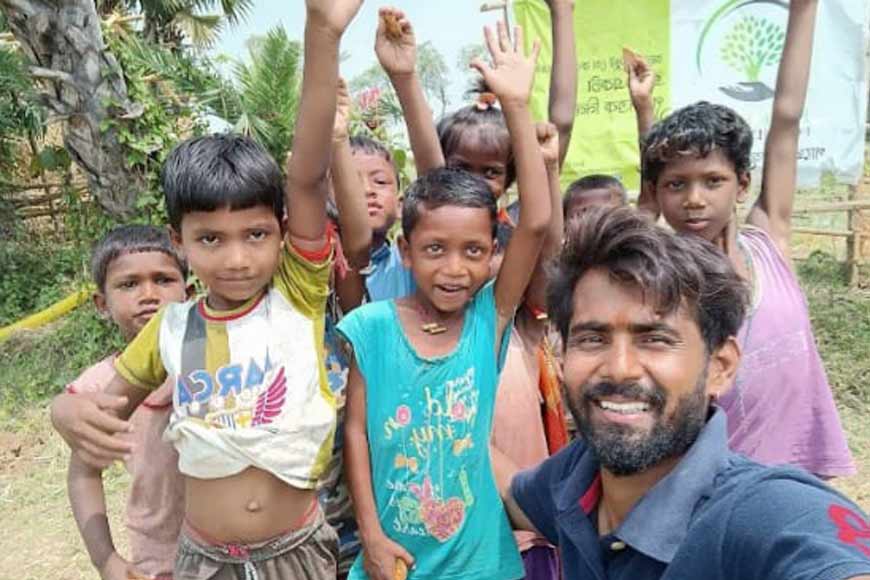
“If you invest your time, talent, and resources, orphans around the world can have much happier and healthier lives. (Beau Sides)
Orphans who have lost their parents or have been abandoned by their parents and to fend for themselves are truly among the most vulnerable in our society. Similarly, it is high time to take note of the enormous struggle that our plants and trees have to carry on every day to survive in an inhospitable and adverse environment. Filmmaker Somnath Ghosh initiated a unique programme last year to set up an ‘orphanage’ for trees and encouraged people to participate in the project and ‘adopt’ an orphaned tree. ‘Brikkho Foundation’ was formed with the vision to “Let this world turn like a firefly from the face of destruction.”
Trees have been inhabiting the surface of Earth for millions of years, long before home sapiens came into existence. In fact, Mother nature evolved and made the world habitable for all living things and trees were her handmaids of transformation. Without them, life on the ‘Blue Planet’ would cease to exist. But throughout history and into modern times, forests have been razed to make space for agriculture and animal grazing, and to obtain wood for fuel, manufacturing, and construction. We forget that forests provide a home to millions of diverse flora and fauna around the world. But the benefits of trees extend far beyond the wildlife who live there. They play a vital role in the world’s carbon cycle by balancing greenhouse gas emissions, making the air in our atmosphere breathable, and protecting against climate change. As companies cut down more and more of our forests to make room for agriculture and industry, the whole planet suffers the consequences. Deforestation threatens our environment, impacts human lives, and kills millions of animals every year.
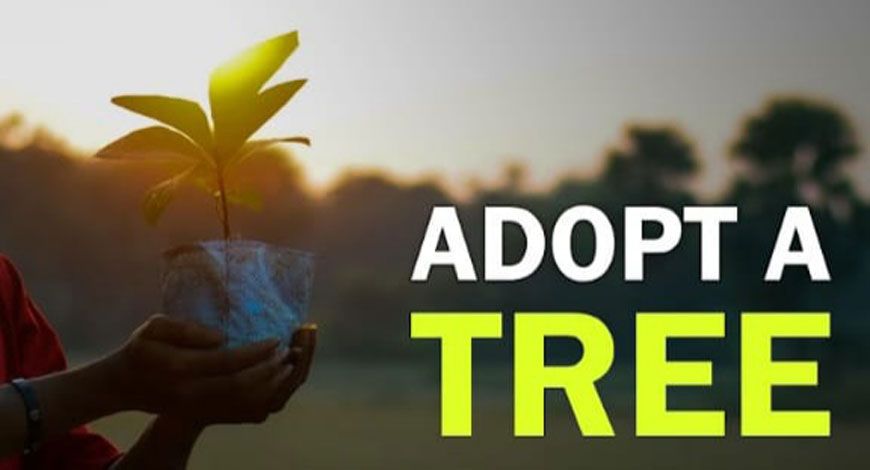
Brikkho Foundation, under the aegis of Ghosh, is working to create an orphan home for trees. But how did it all start? Ghosh, who hails from Santiniketan, did a professional course on Film Editing from High-Tech Animation Institute, Kolkata. After completion, he went back to Santiniketan and started his own multi-media production House, Chhaya-Chhobi India. He got busy making documentaries, short films, advertisements, poster designs etc. and soon made a name for himself in the profession. Meanwhile, he joined Visva Bharati for a full-time graduation course on Rural Development. However, in 2020, when the pandemic started and all institutions, including Visva Bharati closed down, Ghosh, then in his third year, dropped out. This was a crucial time when his life took a new turn and gradually his focus shifted to doing something positive for the society. It all started when his martial arts teacher sought his help to feed the stray dogs living in the Visva Bharati hostel campus. Ghosh got involved in cooking and providing food to all the helpless animals for 150 days at a stretch during the pandemic.
Ghosh’s next call of duty took him to the distant villages severely ravaged by Cyclone Amphan. His team adopted a village and helped the victims with basic amenities, medical help and rehabilitation programmes. As his involvement in community projects increased, he found his life’s mission and decided to dedicate himself to social work full-time. Meanwhile, his teacher informed him that a plant nursery owner was offering to donate 800 saplings and plants and asked Ghosh to arrange for their plantation. Ghosh proceeded to do so but the first problem that he encountered was an acute shortage of land. “Just planting a sapling on a plot may be easy but that does not fulfill the requirement. A person who is investing his time and energy to take care of the sapling must form an emotional bondage with the plant like one does with one’s pets. Only then the healthy growth and development of a living entity like a plant is secured. I was left dissatisfied as I could not secure the upkeep and safety of any of the saplings the way they deserved. I took note of this for future reference,” says Ghosh.
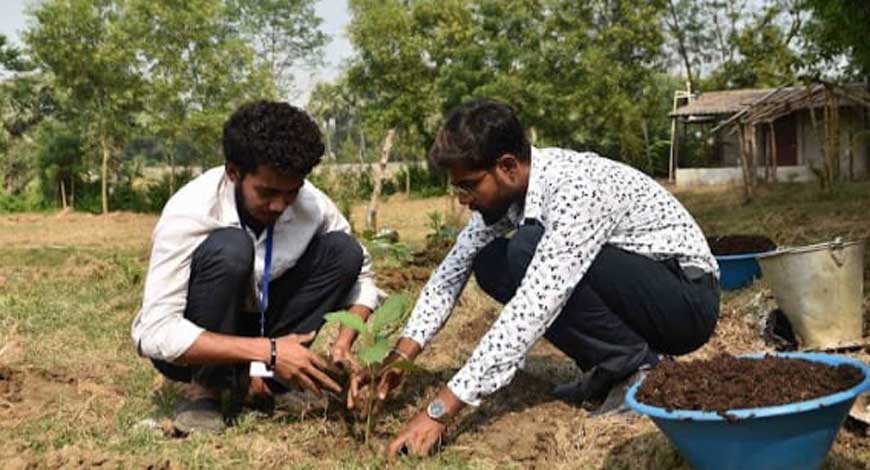
Meanwhile, Ghosh was offered a project by the Burdwan Forest Department to make two documentaries. While conducting research to shoot the documentaries, he went deep inside the jungles on reiki, interacted with forest department officials to understand their course of action after they plant trees and steps, they take to ensure their protection, where and why they fail at times, and spoke at length about human encroachment and their modus operandi to tackle this issue. “I realized the magnitude of the problem with the fast-decreasing forest cover in India which is creating an environmental imbalance and if this continues, we are sitting on a time bomb with the minutes ticking away and a large-scale disaster about to happen in the near future,” emphasizes Ghosh. This got him thinking and he looked for a solution to secure the future of plants. He came across different NGOs but most of them were involved with plantation of saplings and trees but beyond that, none had any concrete project to protect the healthy growth of those saplings.
Also read : Tree plantation drive for a greener Maidan
“Planting a tree is one of the most powerful ways of saving greenery. But adopting a tree is more intense, because it doesn’t just involve planting the sapling, but nurturing and protecting it. It will encourage all to plant and care for the trees,” says Ghosh.
“Since my core professional area is digital media, I looked up the Google search engine for ‘tree adoption’ projects. Unfortunately, I could trace barely a couple of organizations in India working in this sphere although I did get a number of foreign web sites, in both Europe and America, dedicated to plant adoption and these organizations have been working in the field for many years. I decided to introduce ‘plant adoption’ project on a mega scale in India. I was all set to take a major decision in my life. I shut down my multimedia business down and channelized the funds for the new project. I did face stiff resistance at home initially when I broke the news. It was a self-funding project and I sold off all my equipment I had bought to set up my multi-media house including my expensive cameras, sound recording equipment, editing machine etc. and even a drone that I had bought to start my work. A team of dedicated and like-minded volunteers joined me. We procured land for plantation and that was the beginning of ‘Brikkho Foundation,’ an orphanage home for trees was set up last year,” says Ghosh.
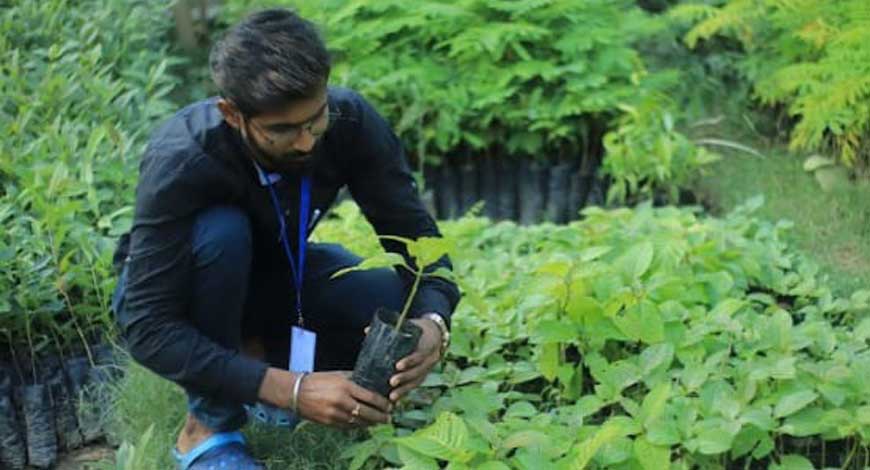
The organization’s slogan says, “Adopt a tree, secure a life,” and its tagline adds, ‘Save Nature, Control Pollution, Spread Happiness. ‘In fact, the Foundation completed one year on October 13 this year but Ghosh and his team decided to stall the birthday celebration till the time they achieved their target of planting 1,000 trees. Under the ‘adopt a tree’ initiative, people can select a plant of their choice and name them too. It can be planted on the property of the Brikkho Foundation by paying a small fee.
Tiyasa Roy, a former physical education teacher in a Kolkata school, was feeling restless during the two years of forced home confinement during the pandemic and was raring to do something. Just then she came across Brikkho Foundation and its various activities to save trees. The concept inspired her and she wanted to be part of the project. She says, “I went to Santiniketan and met Ghosh Sir and offered to join the foundation as a volunteer. I was welcomed and now I have been associated with the association from the early days and feel it my privilege to work for Brikkho Foundation.”
Gradually, the field of operation of Brikkho Foundation increased and local villagers were involved in the project. Ghosh has grand plans to turn every village that the Foundation is working with into a smart, village by involving the local people to take care of the orphaned plants and trees in lieu of an honorarium. Work is already on and his volunteers organize camps round the year to train rural people on making craft items like mats, nests, decorative items which have a ready market in cities and thus help generate income to build a self-reliant village community.
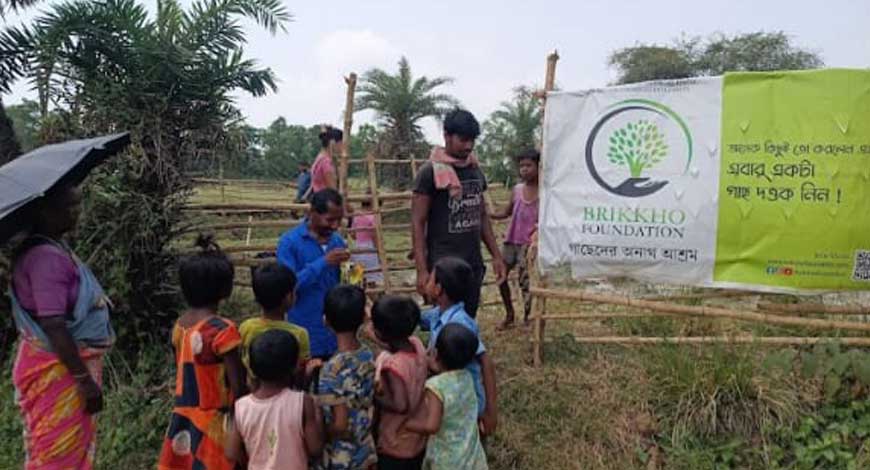
Ghosh says, during his field work, he has encountered age-old superstitions among locals that often impede the foundation’s work. He says, “Villagers do not let us plant trees like Neem (Azadirachta indica aka Indian lilac), Peepul (Indian fig tree or Ficus religiosa), Banyan tree or Tamarind tree in their courtyard or even their land for fear of evil spirits residing on these trees. Urban people do not know this is one reason why at times we cannot plant these trees on plots donated to us by rural people.” He relates an incident where an elderly villager approached Ghosh with the intention of donating one bigha land to Brikkho Foundation but when Ghosh said he planned to plant Neem saplings on the plot, the man vehemently opposed and finally refused and reverted his decision to donate!
Ghosh is also planning on community plantation and looking for avenues. There are large tracts of land adjacent to dilapidated and abandoned schools and temples in different villages. Ghosh plans to utilize the fallow land for afforestation and reservation of plants and trees. The foundation received a plot from a donor and Ghosh and his team is involved in a unique project that aims to set up jungles and rehabilitate exotic endangered birds and animals, providing a safe natural zone. Once the project starts, it will not only attract zoologists and students but will also provide a learning experience for urban children to see birds and animals in natural surroundings and learn about them from detailed information which will be displayed prominently.
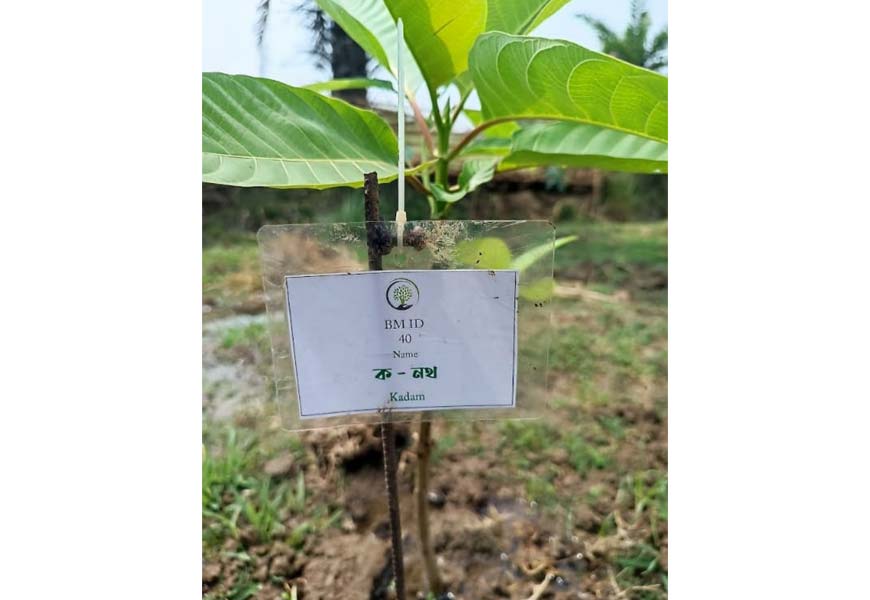
Ghosh plans to create a model that his organization will be able to apply in every village, taking into account the dual purpose of tree plantation project and making it viable and sustainable for the villagers. He says, “All our projects are in the nascent stage at this moment. Once they mature, they will all form into a pattern. We have a section in our website where we display sustainable items made from natural resources by the villagers like handmade bird nests or fences made of bamboo etc. We are expecting project funding and once that comes, we will be able to expedite our work. There are many houses in the rural areas where basic amenities like toilets or clean water is not available. There are no schools for children. We intend to work on these fields as well. We want to develop roads and plant rows of trees lined on either side of the roads. This will naturally make a visit to the man-made forest in the village a memorable one for urbanites. We are trying to reduce the use of plastic and sensitize people about the ill-effects of plastic on nature as well as on the health of human beings and cattle,” says Ghosh. He is confident that one day he will be able to sensitize and convert people to live in harmony with nature.











